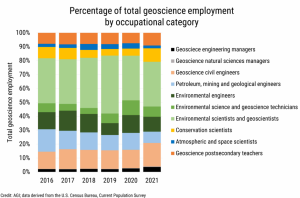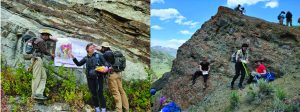Chapter 1 Introduction to Geoscience
What do Geologists Do?
Geologists are involved in a range of widely varying occupations with one thing in common: the privilege and responsibility of studying this fascinating planet. Geologists work in a wide variety of roles. Some work in the resource industries, including mineral exploration and mining and energy exploration and extraction. Other major areas where geologists work include hazard assessment and mitigation (e.g., assessment of risks from slope failures, earthquakes, and volcanic eruptions); water supply planning, development, and management; environmental planning and cleanup; waste management; and assessment of geological issues in the forest industry, and in close coordination with civil engineers on construction projects such as highways, tunnels, and bridges. Most geologists are employed in the private sector, but many work for government-funded geological organizations, such as the U.S. Forest Service, Bureau of Land Management, the United States Geological Survey, or one of the state geological surveys. And of course, many geologists are involved in education at the secondary and the post-secondary levels.

Some people are attracted to geology because they like to be outdoors, and historically many geological opportunities involve fieldwork in places that are as amazing to see as they are interesting to study. However, geology is not just for “outdoorsy” people. In fact, today the majority of geological work and research is also done in offices or laboratories using sophisticated analytical equipment, modeling and computer coding, and controlled analog experiments. There is something for everyone in the geosciences. Geological work tends to be varied and challenging, and for these reasons and many others, geologists are among those who are the most satisfied with their employment.

There is a wide variety of careers out there. To learn more about what the career opportunities in the geosciences look like, visit this American Geoscience Institute page.
Media Attributions
- Physical Geology-2nd Edition, by Steven Earle is licensed under CC BY 4.0, Modified from the original by Ryan B. Anderson.
- Figure 1.4.1: © 2016 American Geosciences Institute and used with their permission.
- Figure 1.4.2: © Ryan B. Anderson. CC BY.
